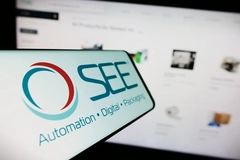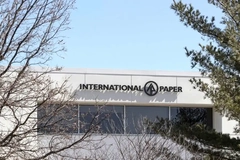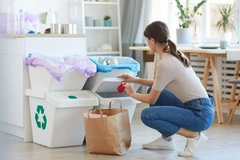Ball’s climate transition plan: Adam Shalapin talks aluminum recycling problems and cross-sector collaboration

23 Mar 2023 --- Ball has released its “Climate Transition Plan,” which details a number of plans and collaborations the US glass producer intends to take to cut down its carbon emissions rates. The plan was released alongside Ball’s 2022 Combined Financial and Sustainability Report.
The 2022 report details the company’s commitment to environmental, social, and economic sustainability, as well as progress against its 2030 product stewardship and social impact goals.
We speak to Adam Shalapin, director of global sustainability at Ball Corporation, about the importance of recycling in the company’s results and future plans.
“The biggest challenge we anticipate is that, in order to achieve our goals, we will need to make progress on areas that are out of our direct control. Like many companies, the majority of our emissions are within our value chain but outside of our direct operations, with a high percentage tied to the aluminum we purchase,” he says.
 Aluminum is infinitely recyclade but often goes unrecycled.“To address this challenge, we will need to strengthen recycling rates, which will enable us to increase the recycled content in our products and substantially reduce our emissions. We recognize this requires industry alignment and cross-sector collaboration, and we look forward to working with our partners to achieve these goals.”
Aluminum is infinitely recyclade but often goes unrecycled.“To address this challenge, we will need to strengthen recycling rates, which will enable us to increase the recycled content in our products and substantially reduce our emissions. We recognize this requires industry alignment and cross-sector collaboration, and we look forward to working with our partners to achieve these goals.”
Cross-sector efforts
The transition report includes a 55% reduction in absolute GHG emissions by 2030, covering all three scopes of emissions.
Last year, Ball generated 87% (or US$13.37 billion) of our revenue from selling products manufactured with recycled materials.
“Achieving goals that are out of our direct control will require a collective, cross-sector effort,” continues Shalapin.
“Not only are we partnering directly with our suppliers and customers to advocate for improvements in recycling policy, like Extended Producer Responsibility regulations and modern Deposit Return Systems or Recycling Refunds, but we are also participating in the First Movers Coalition to drive decarbonization of the remaining amount of primary aluminum used in our products.”
Shalapin says Ball’s customers are working toward their sustainability goals and commitments because doing so is essential for long-term success both with investors and consumers.
“With packaging representing up to 40% of our customers’ carbon footprint, Ball plays a key role in helping them achieve these goals by being their sustainable supplier of choice. We are confident that with this Climate Transition Plan as our guide, a net zero future is viable for aluminum beverage packaging,” he asserts.
Tackling Scope 3 emissions
Ramon Arratia, chief sustainability officer of Ball, emphasizes the importance of fighting Scope 3 emissions. “Ball’s Climate Transition Plan will help our customers achieve their Scope 3 emissions targets. Strong collaboration with our customers and suppliers across the value chain will be needed, as well as joint policy advocacy for high circularity.”
“The fight to keep the 1.5-degree celsius limit alive will be won or lost in this decade; Ball’s focus has been on achieving 55% reductions by 2030 with existing commercial technologies and applying best practice policies,” she says.
Last year, Ball released a consumer survey that displays a growing demand for environmentally sustainable household and personal care product packaging options, with 45% of consumers citing it as an “extremely important attribute.”
By Louis Gore-Langton











